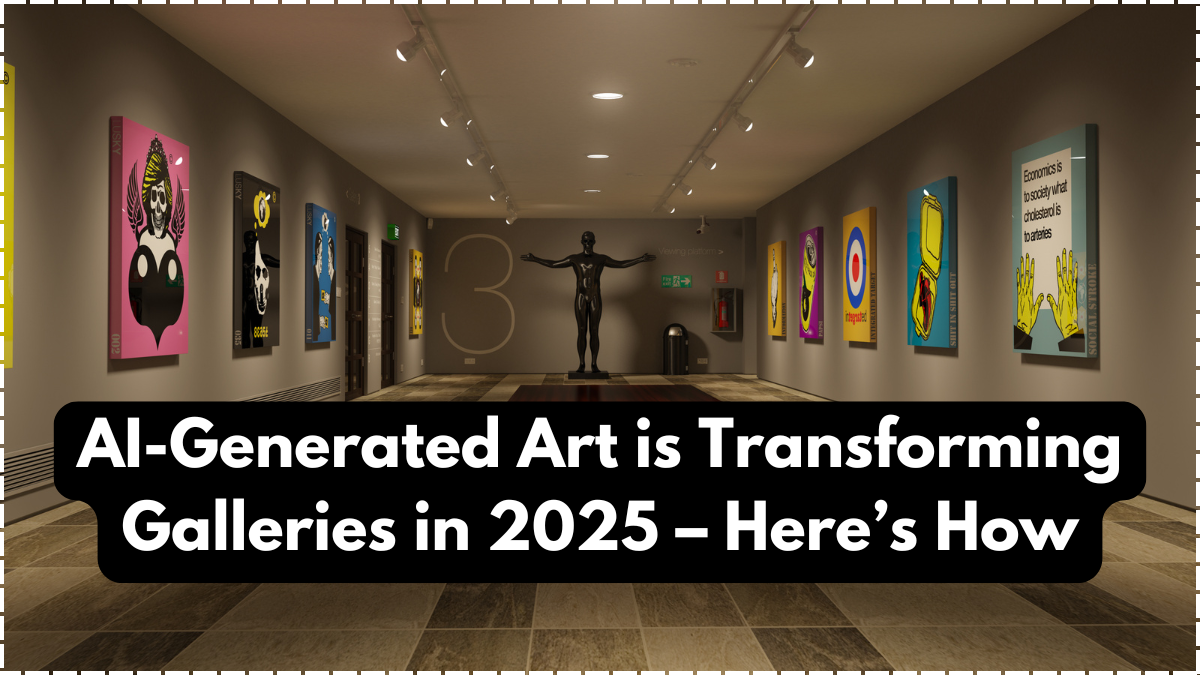The art world is undergoing one of its most exciting transformations in history. In 2025, AI-generated art is no longer just a novelty—it’s a powerful movement shaping how creativity is expressed and experienced. Galleries around the globe are embracing this new wave of innovation by curating digital art exhibitions that showcase works created entirely or partially by artificial intelligence. This shift is not only changing what we see on gallery walls but also redefining how we think about art itself.

Why AI-Generated Art Is Gaining Popularity
The rise of AI-generated art comes from a blend of curiosity, technology, and creativity. Algorithms can now analyze millions of artworks, learn styles, and create pieces that range from hyper-realistic portraits to abstract compositions. This capability has captured the attention of artists, collectors, and curators alike. Paired with the growing trend of digital art exhibitions, these works are reaching audiences in both physical galleries and virtual spaces, breaking traditional boundaries in the art world.
How Galleries Are Showcasing AI-Generated Art
In 2025, galleries aren’t just hanging canvases—they’re creating immersive experiences around AI-generated art. Many spaces now feature interactive screens, projection rooms, and virtual reality setups to enhance digital art exhibitions. Visitors can watch AI create art in real time or even influence the process by selecting colors or themes. This blend of technology and creativity is making art more engaging and accessible.
Key trends include:
-
Hybrid exhibitions combining traditional paintings with AI creations
-
Interactive installations where visitors can “collaborate” with AI
-
Use of blockchain for authenticity and ownership of digital works
-
Expansion of online digital art exhibitions for global audiences
Table of AI Art Platforms Powering Exhibitions
Here’s a look at some key platforms driving AI-generated art and fueling digital art exhibitions:
AI Platform |
Contribution to Art Exhibitions |
|---|---|
DALL·E |
Generates unique digital artworks |
MidJourney |
Creates abstract and surreal visuals |
Artbreeder |
Blends styles for collaborative pieces |
DeepArt |
Transforms photos into art in iconic styles |
The Impact on Artists and Audiences
While some worry that AI could overshadow human artists, many see it as a tool for collaboration. AI-generated art allows creators to explore styles, generate ideas, and push creative boundaries faster than ever. For audiences, digital art exhibitions provide new ways to connect with art—whether that’s standing in an interactive gallery or attending a virtual show from across the world. The relationship between artist, machine, and viewer is evolving into something entirely new.
Conclusion
In 2025, AI-generated art isn’t just changing galleries—it’s redefining what art can be. From immersive shows to accessible digital art exhibitions, AI is expanding creativity, making it more inclusive, interactive, and innovative. This isn’t the end of traditional art—it’s the beginning of a new era where technology and imagination meet.
FAQs
What is AI-generated art?
AI-generated art is artwork created with the help of artificial intelligence algorithms, often combining machine learning with human guidance.
How are digital art exhibitions using AI?
Digital art exhibitions showcase AI-created works through interactive screens, projections, and even virtual reality experiences.
Does AI replace human artists?
No, AI-generated art is more of a collaborative tool, helping artists explore new ideas rather than replacing creativity.
What platforms are popular for creating AI art?
Platforms like DALL·E, MidJourney, and Artbreeder are widely used for producing AI-generated art showcased in galleries.
Are digital art exhibitions only online?
Not at all—many physical galleries now feature digital art exhibitions, blending on-site and online experiences.
Click here to learn more